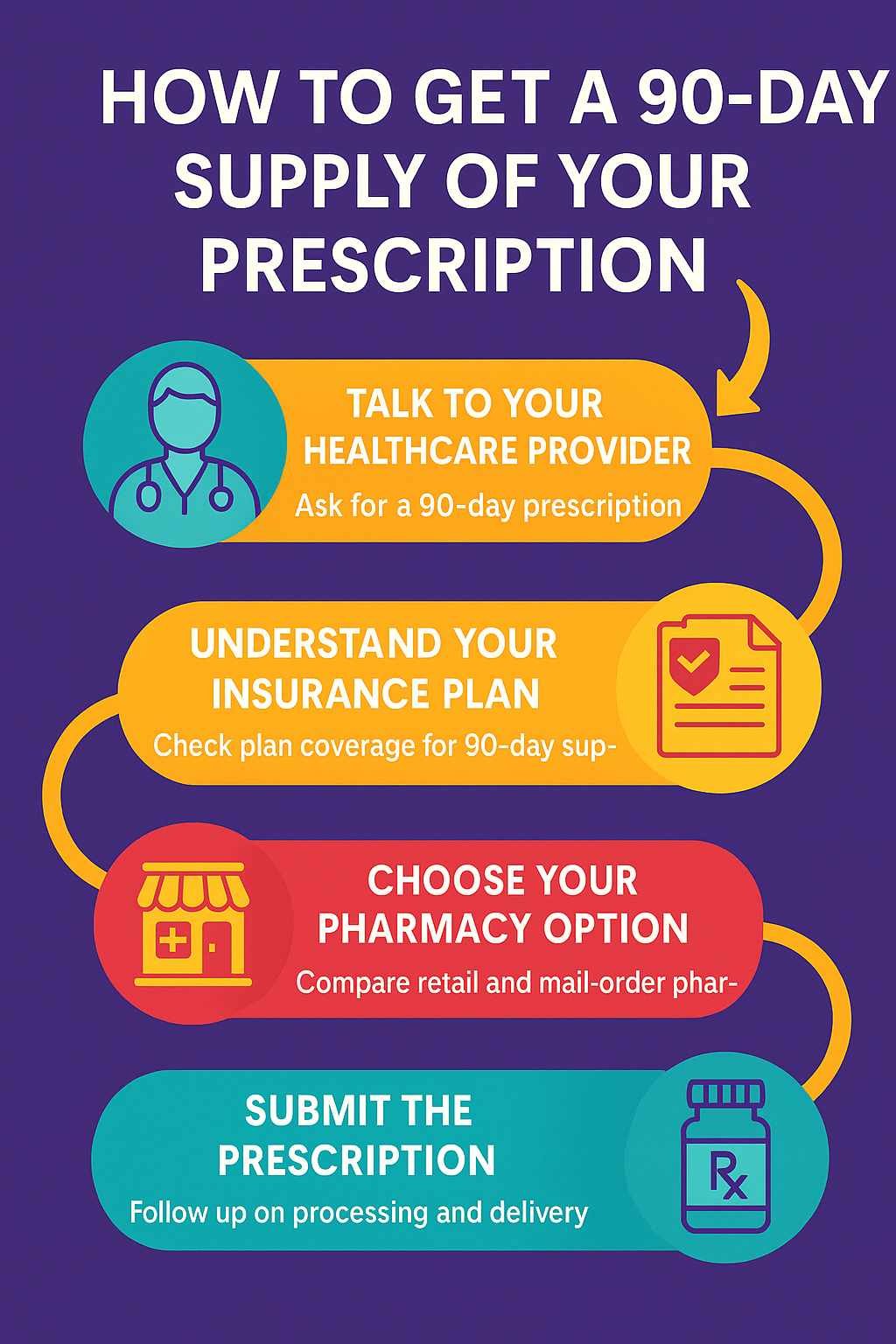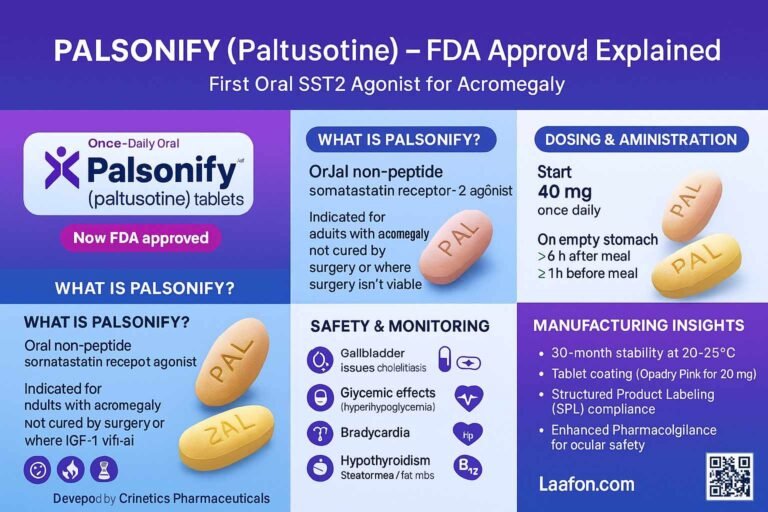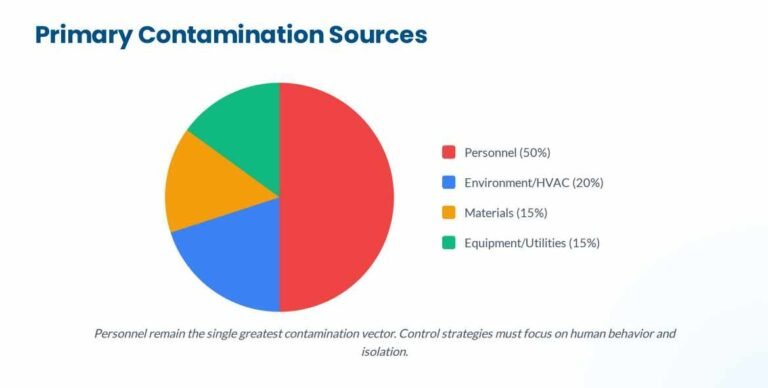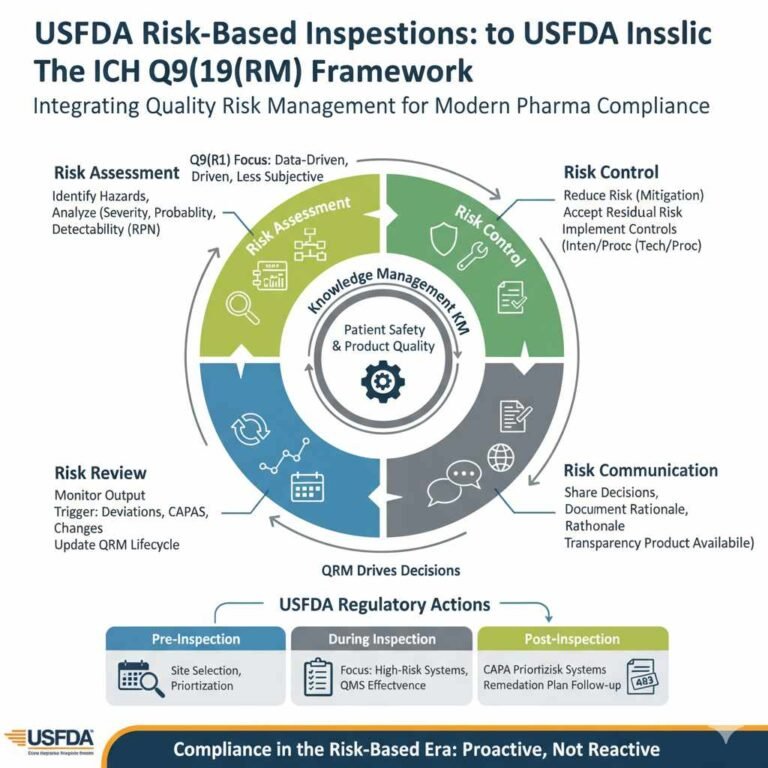In American healthcare, there’s a growing trend that’s putting more time and money back in patients’ pockets- the 90-day prescription refill. For anyone who takes medication regularly, especially for a chronic condition, switching from monthly refills to a three-month supply is a smart move. It means fewer pharmacy visits, lower costs, and a much easier way to stay on top of your health.
In this guide, we will discuss how to get a 90-day prescription.
This isn’t just a matter of convenience; it’s a direct response to a serious national issue. Poor medication adherence contributes to an estimated 125,000 deaths and up to 25% of hospitalizations in the U.S. each year. A major reason for this is cost. In 2021, over 9 million American adults skipped or delayed their medication because they couldn’t afford it.
The 90-day supply model tackles these problems head-on by offering:
- Cost Savings: Lower copayments and bulk pricing.
- Convenience: Fewer trips to the pharmacy.
- Better Health: Improved adherence to your medication schedule.
This guide is for patients, caregivers, and anyone managing a chronic illness. We’ll walk you through the simple steps to make the switch in 2025.
What Exactly Is a 90-Day Prescription Supply?
A 90-day prescription is a single fill of your medication that lasts for three months, contrasting with the traditional 30-day refill cycle. This extended supply is primarily for
maintenance medications—drugs you take regularly to manage a long-term condition like high blood pressure, diabetes, or high cholesterol.
Insurance companies and pharmacies use the “maintenance medication” classification to determine eligibility for 90-day supplies. Your insurer has a specific list (called a formulary) of drugs that qualify. For these drugs, many plans are designed to encourage or even require a 90-day fill after an initial stabilization period.
The Top Benefits of a 90-Day Supply
Cost Savings
Many insurance plans are structured to make 90-day supplies the cheaper option. For example, a plan might charge the equivalent of two 30-day copays for a three-month supply, essentially giving you one month free. In some cases, a 90-day supply copay is a flat fee that is significantly less than three separate monthly copays, potentially cutting your cost in half.
Time and Convenience
Switching to a 90-day supply reduces your pharmacy visits from 12 to just 4 per year for each medication. For those who opt for mail-order pharmacies, the convenience is even greater, with automatic refills delivered directly to your door.
Improved Medication Adherence
This is the most important benefit. With a three-month supply at home, you’re far less likely to miss doses because you ran out of pills or forgot to call in a refill. Studies show that patients using 90-day supplies have significantly higher adherence rates, which leads to better health outcomes and fewer hospital visits.
How to Get a 90-Day Supply: A Step-by-Step Guide for 2025
Step 1: Talk to Your Healthcare Provider
Your doctor must authorize a 90-day supply. Be direct in your request.
- How to Ask: Say, “I’d like to switch my long-term medications to a 90-day supply to make it easier to stay on track and save money. Could you please write my next prescription for [Medication Name] for 90 days with refills?”.
- Clarify Key Details: Confirm your condition is stable, as 90-day supplies are for maintenance therapy. If you’re starting with a mail-order pharmacy, ask for two prescriptions: one for 30 days to fill locally right away, and a second for 90 days to send to the mail-order service. This prevents any gap in treatment.
Step 2: Understand Your Insurance Coverage
Your insurance plan’s rules determine your coverage and costs.
- Check Your Formulary: Your plan’s formulary is its list of covered drugs. Review it to see if your medication is covered, what it will cost (its “tier”), and if there are special requirements like prior authorization. Insurers typically release their 2025 formularies in the fall of the previous year.
- Coverage Differences by Plan Type:
- Private/Commercial Insurance: Many plans have preferred pharmacy networks (e.g., CVS, Walgreens) where you get the lowest cost for 90-day fills.
- Medicaid: Benefits are state-specific. Many states now cover 90-day supplies for maintenance drugs, and some even mandate it after a patient’s dose is stable. Check your state’s Medicaid pharmacy policy.
- Medicare Part D (Critical 2025 Update): Starting in 2025, there is a new $2,000 annual cap on out-of-pocket drug costs. Once you spend $2,000 on copays and deductibles, you will pay $0 for covered drugs for the rest of the year. The “donut hole” coverage gap is also eliminated. Using 90-day supplies can help you reach this cap faster, unlocking $0 refills sooner in the year.
Step 3: Choose Your Pharmacy
You can typically choose between a local retail pharmacy and a mail-order service.
| Feature | Local Retail Pharmacy | Mail-Order Pharmacy |
| Convenience | Immediate access for urgent needs and face-to-face pharmacist advice. | Medications delivered to your door, with automatic refill programs available. |
| Cost | Cost-effective if in your plan’s “preferred network”. | Often the lowest-cost option encouraged by insurance plans. |
| Best For | New or urgent prescriptions; those who value a personal relationship with their pharmacist. | Stable, long-term medications where convenience and lowest cost are priorities. |
Step 4: Submit the Prescription and Follow Up
- Processing: Your pharmacy will process the 90-day prescription through your insurance.
- Tracking: If using mail-order, create an online account to track your delivery, which usually takes 7-10 business days.
- Renewal: Sign up for automatic refill reminders. Mail-order services will often contact your doctor for you when your refills run out.

Common Challenges and How to Overcome Them
- Insurance Denial or Prior Authorization (PA): If your prescription is denied because it needs a PA, your doctor’s office must submit clinical information to your insurer to justify the medication. Be proactive: contact your doctor’s office to start the process and follow up with them and your insurer. If denied, you have the right to appeal.
- Pharmacy Refusal or Stock Issues: A pharmacy may be out of stock or have questions about a handwritten prescription. Solution: Call ahead to check stock; they can usually order it for the next day. Ask your doctor to e-prescribe to avoid legibility issues. If you feel a refusal is improper, you can try another pharmacy or file a complaint with the state Board of Pharmacy.
- “Refill Too Soon” Rejection: Insurers have rules to prevent stockpiling. If you need an early refill for a valid reason (like travel), ask the pharmacist or your doctor to request an override from your insurance company.
Does Every Medication Qualify for a 90-Day Supply?
Not all medications are eligible. It depends on the drug type and state and federal laws.
- Typically Eligible: Maintenance medications for chronic conditions like heart disease, diabetes, asthma, and high blood pressure are the best candidates.
- Typically Ineligible: Acute medications (like antibiotics) and high-cost specialty drugs are usually limited to a 30-day supply.
- Controlled Substances: The rules are complex.
- Schedule II Drugs (e.g., Adderall, OxyContin): Federal law allows doctors to issue multiple, sequential prescriptions for up to a 90-day supply.
- Schedule III-IV Drugs (e.g., Xanax, Ambien): A 90-day supply is generally permissible.
- CRITICAL CAVEAT: State laws can be more restrictive than federal law. If there’s a conflict, the stricter rule must be followed. Always ask your pharmacist about the specific regulations in your state.
Expert Tips for Maximum Savings
- Manufacturer Coupons: For brand-name drugs, search online for “[Medication Name] savings card.” These cards, used with your insurance, can dramatically lower your copay.
- Price Comparison Services: If you’re uninsured or have a high deductible, always check prices on free services like GoodRx and SingleCare. Their negotiated cash price is often cheaper than an insurance copay. GoodRx often has lower prices due to special offers, while SingleCare has a simpler interface and direct pharmacy partnerships .
- Pharmacy Loyalty Programs: Programs like myWalgreens and CVS ExtraCare offer rewards (like points or store credit) on your prescription spending, which can be used for other purchases .
- Automatic Refills: Opt-in to have your refills processed and shipped automatically, ensuring you never run out.
Frequently Asked Questions (FAQs)
Can I get a 90-day prescription without insurance?
Yes. Ask your doctor for a 90-day prescription and use a discount service like GoodRx or SingleCare to pay the lowest cash price. You can also apply for Patient Assistance Programs (PAPs) directly from the drug manufacturer, which may provide the medication for free or at a low cost.
Is a prior authorization needed for a 90-day supply?
A PA is tied to the drug, not the quantity. If your medication requires a PA for a 30-day fill, it will also need one for a 90-day fill. The 90-day quantity itself doesn’t trigger a new PA.
Can controlled substances be filled for 90 days?
It depends on the drug’s schedule and your state’s laws. Federal law may allow it, but state law can be stricter and must be followed. Ask your local pharmacist for the definitive answer for your state.
How does Medicare Part D cover 90-day refills in 2025?
Medicare Part D plans cover 90-day refills and often incentivize them. The biggest change in 2025 is the new $2,000 annual out-of-pocket cap. Once you hit this cap, your drug copays will be $0 for the rest of the year, making 90-day supplies a smart strategy to reach the cap faster.
What if my pharmacy refuses a 90-day supply?
Calmly ask for the reason. If it’s an insurance issue, call your plan. If it’s a stock issue, ask them to order it. If it’s a state law issue (common for controlled substances), the pharmacist must comply. If you feel the refusal is improper, you can file a complaint with the state Board of Pharmacy.
For More Suggestion Contact Us
Conclusion: Take Control of Your Medication Management
Switching to a 90-day prescription supply is a simple, powerful way to save money, reduce hassle, and improve your health. The process is straightforward: talk to your doctor, understand your 2025 insurance plan, and choose the right pharmacy for you. By taking these proactive steps, you become an empowered partner in your own healthcare journey.
References:
- Characteristics of Adults Aged 18–64 Who Did Not Take Medication as Prescribed to Reduce Costs: United States, 2021-[CDC]
- Medication Adherence: Helping Patients Take Their Medicines As Directed-[PubMed Central]
- The Value of 90-Day Retail-Walgreens Boots Alliance (Investor Publication)
- Recent Trends in the Dispensing of 90-Day-Supply Prescriptions at Retail Pharmacies: Implications for Improved Convenience and Access-[National Library of Medicines]




